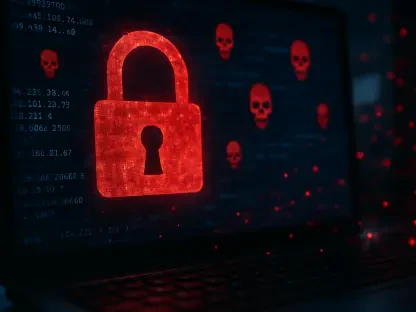Introduction
In an era where cryptocurrency transactions underpin a growing segment of global business operations, the security of digital assets has become a paramount concern for enterprises engaging in blockchain-based solutions. The October 2025 MetaMask Security Report delivers a stark reminder of the escalating threats within this ecosystem, detailing billions in stolen assets and sophisticated cyberattacks that exploit both technological and human vulnerabilities. For B2B professionals, the stakes are exceptionally high as these risks directly impact financial stability, customer trust, and regulatory compliance in an increasingly interconnected market.
This editorial delves into the critical insights from the report, focusing on the evolving nature of crypto threats and the strategic solutions that businesses must adopt to safeguard their operations. It explores not just the technical challenges but also the systemic and human factors that exacerbate risks in decentralized finance (DeFi) and beyond. By dissecting key trends, collaborative defense mechanisms, and actionable strategies, the discussion aims to equip decision-makers with the knowledge to navigate this complex landscape. Understanding these dynamics is essential for any organization leveraging cryptocurrency, as the cost of inaction could undermine years of digital transformation efforts.
The importance of this topic cannot be overstated for enterprises aiming to integrate blockchain technology into supply chains, payment systems, or investment portfolios. With cyber threats becoming more diverse and damaging, proactive security measures are no longer optional but a cornerstone of sustainable business strategy.
Navigating the Crypto Threat Landscape
The cryptocurrency ecosystem faces an unprecedented wave of sophisticated threats that challenge even the most robust enterprise defenses. The MetaMask report highlights staggering figures, such as $2.17 billion in crypto theft by mid-2025, with projections to surpass $4 billion by year-end. These losses stem from a variety of attack vectors, including phishing schemes, ransomware like Chaos-C++, and DeFi protocol exploits targeting platforms such as Astera and Abracadabra.money. For businesses, this translates into potential disruptions in operations and significant financial exposure, especially when digital assets are integral to cross-border transactions or treasury management.
Beyond individual incidents, the report underscores a troubling trend of technological escalation, where malicious actors leverage artificial intelligence to outpace traditional defenses like bug bounty programs. This arms race poses a direct threat to corporate IT infrastructures, as attackers can exploit vulnerabilities in blockchain networks—spanning EVM, Solana, and Tron—faster than patches can be deployed. Enterprises must recognize that relying solely on reactive measures leaves them vulnerable to systemic risks, particularly when aging smart contracts or unverified third-party integrations are involved in their tech stack.
A critical takeaway for B2B leaders is the human element in these security breaches. Social engineering tactics, such as pig butchering scams and compromised social media accounts, exploit user trust to devastating effect. With Chainalysis estimating $15 billion in digital assets held by threat actors and another $60 billion in connected wallets, the scale of illicit activity demands a cultural shift within organizations to prioritize security awareness alongside technological safeguards.
Collaborative Defense as a Business Imperative
One of the most promising insights from the report is the power of industry-wide collaboration in mitigating crypto threats, offering a blueprint for enterprises to strengthen their defenses. MetaMask’s partnership with the Security Alliance (SEAL) to launch a phishing defense network exemplifies how shared intelligence can enable real-time threat mitigation. By uniting with other major wallets like WalletConnect and Phantom, this initiative ensures that verified phishing reports are disseminated swiftly, reducing the window of opportunity for attackers—a model that businesses can emulate through cross-industry alliances.
Rapid response mechanisms also prove invaluable, as demonstrated by Linea’s swift action during the Astera lending protocol exploit. This coordinated effort between layer-2 solutions, protocols, and external researchers minimized damage, showcasing the business value of agility and partnerships in crisis management. For enterprises, integrating such responsiveness into incident response plans can protect not only assets but also reputation, which is often harder to recover once tarnished by a high-profile breach.
Moreover, the traceability of on-chain funds offers a silver lining for asset recovery, with record-breaking seizures like the $7.4 billion Bitcoin confiscation in the UK and $15 billion from the Prince Group in the US. These successes, supported by blockchain analytics, highlight the potential for businesses to collaborate with law enforcement and analytics firms to reclaim stolen assets. Adopting such strategies can turn a defensive posture into a proactive recovery framework, directly impacting bottom-line resilience.
Strategic User Education for Enterprise Protection
While technology and collaboration are vital, the report emphasizes that user vulnerability remains a primary entry point for attackers, a concern that businesses must address through structured education programs. Tactics like clipboard hijacking in ransomware or phishing via compromised accounts exploit employee oversight, often bypassing even the most advanced security tools. For organizations, this means that every team member interacting with crypto wallets or blockchain platforms becomes a potential risk vector if not adequately trained.
Implementing rigorous verification practices can significantly reduce these risks, such as mandating double-checks on wallet addresses and skepticism toward unsolicited offers. Enterprises should integrate these habits into standard operating procedures, embedding security mindfulness into daily workflows. The business impact is clear: reducing human error minimizes costly breaches and preserves client confidence, which is critical in competitive markets where trust is a differentiator.
Furthermore, the report’s actionable advice aligns with the need for ongoing training tailored to the evolving threat landscape. Companies can draw lessons from incidents like the BNB Chain social media hack to develop simulations that prepare staff for real-world scenarios. Investing in such initiatives not only fortifies defenses but also demonstrates a commitment to due diligence, an aspect increasingly scrutinized by regulators and partners in the blockchain space.
Conclusion
Reflecting on the insights from the MetaMask Security Report of October 2025, it becomes evident that the cryptocurrency security landscape demands a multifaceted approach from enterprises. The persistent sophistication of threats, countered by collaborative defenses and user education, shapes a critical narrative for B2B professionals. Moving forward, businesses must prioritize strategic alliances, rapid response capabilities, and comprehensive training to safeguard their digital assets. The broader implication is a call to integrate security as a core component of blockchain adoption, ensuring that innovation does not outpace protection in this dynamic environment.









